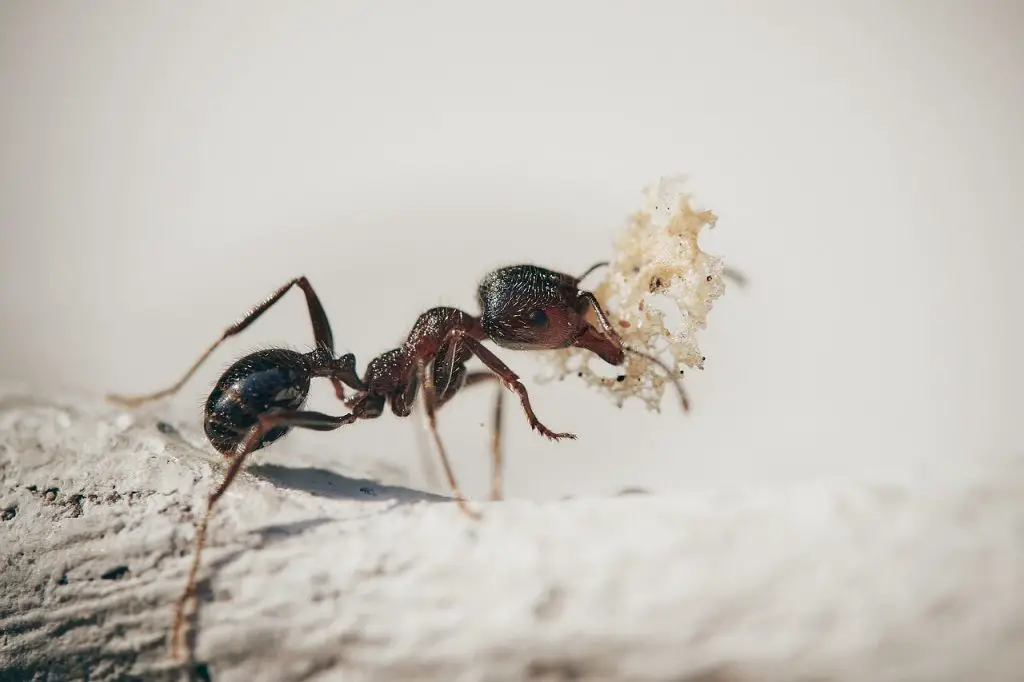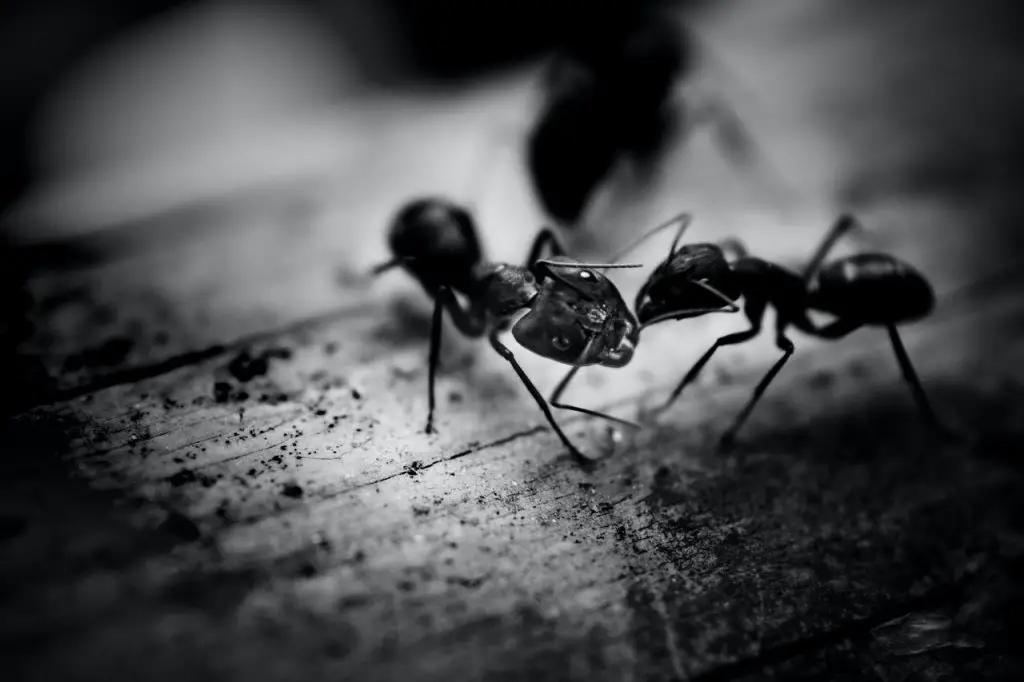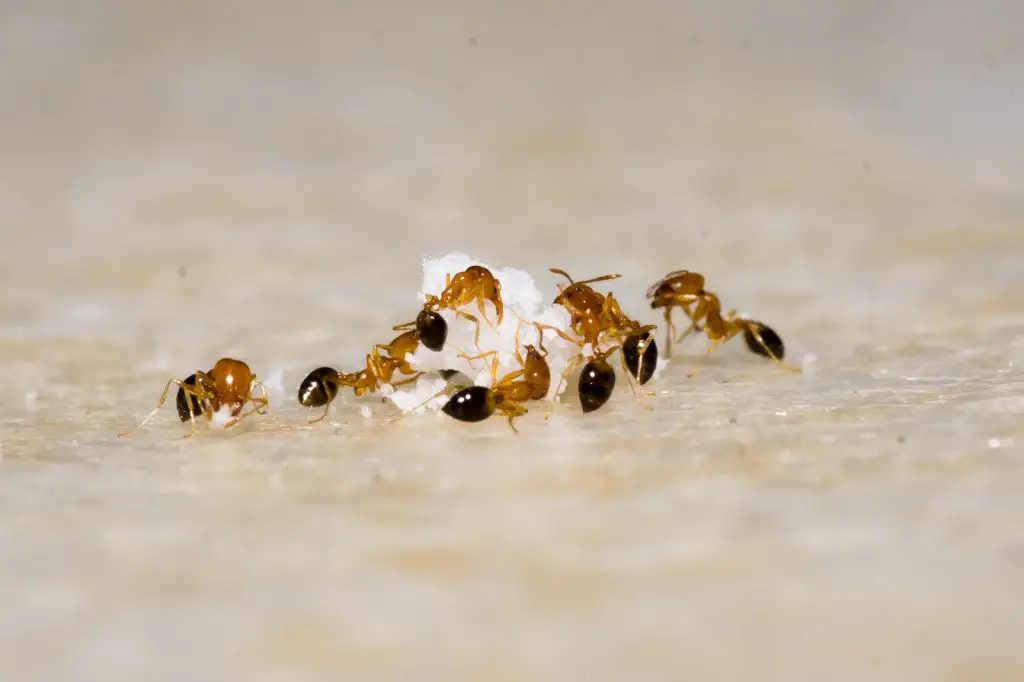Picture this: A tiny ant crawling on your hand. Have you ever wondered what’s going on inside their body, beyond what we can see?
The truth is, there’s more to ants than meets the eye. In fact, their circulatory system is a mystery that scientists have been trying to unravel for years.
So, join us on a journey into the intriguing world of ants and discover the answer to the question that’s been bugging us all. Do Ants Have Hearts? The answer may surprise you.
The Ant’s Body
Ants are insects with distinct body structure, which is divided into three segments: the head, thorax, and abdomen.
The Head
The head of an ant contains the mouthparts, antennae, eyes, and brain. The mouthparts of an ant are adapted for a wide range of functions, such as biting, cutting, and sucking. Antennae are used for sensory perception, communication, and navigation.
Ants have two compound eyes and three simple eyes, which together provide them with a broad visual field.
The Thorax
The thorax of an ant is the middle segment and is where the legs and wings (if present) are attached. Ants have three pairs of legs, each with two claws at the end for grasping and climbing.
The wings of ants are often present only in reproductive individuals and are used for dispersal and mating.
The Abdomen
The abdomen of an ant is the last segment and contains the digestive, reproductive, and respiratory organs. Ants have a complex digestive system that includes a crop, gizzard, and midgut.
The reproductive organs of ants vary depending on the caste (worker, queen, or male) and the species. Ants breathe through tiny openings on the sides of their bodies called spiracles.
Do Ants Have Hearts?
Ants have a heart, but it is different from the hearts of humans and other animals. Ants have an open circulatory system, which means that their blood, called hemolymph, flows freely through their body cavity and is pumped by a long, tube-like heart that runs along their back.
This system is well-suited to its small size and allows for the efficient distribution of nutrients and waste products.
The Circulatory System in Ants
Ants have an open circulatory system, which means that their blood or hemolymph flows freely through their body cavity, called the hemocoel. The hemolymph is pumped by the heart, which is a long, tube-like structure that runs along the dorsal side of the ant’s body.
The hemolymph or blood contains nutrients, hormones, and immune cells, and it also helps to transport waste products. The heart pumps the hemolymph through a series of vessels, called arteries and aorta, which distribute the hemolymph to the various parts of the ant’s body. The hemolymph then flows back to the heart through a series of veins and Ostia, which are openings in the heart.
Unlike mammals and other animals with closed circulatory systems, ants do not have separate blood vessels that transport oxygen and nutrients to individual cells. Instead, the hemolymph bathes the organs and tissues directly, and gas exchange occurs through tiny tubes called tracheae, which supply oxygen to the cells.

Ants vs. Humans Heart, Similarities and Differences
There are a couple of differences and similarities between human and ant hearts here they are as follows:
Similarities
- Both ants and humans are social animals that live in communities with specialized roles for individuals.
- Both ants and humans have complex communication systems. Humans use language, while ants use chemical signals called pheromones.
- Both ants and humans have a digestive system that breaks down food for energy.
Differences
- Ants have a much simpler body structure than humans, with three body segments and an open circulatory system, while humans have a more complex body with many specialized organs and a closed circulatory system.
- Ants are much smaller than humans, with some species measuring just a few millimeters in length.
- Ants have a much shorter lifespan than humans, with some species living only a few weeks or months, while humans can live for several years.
- Humans have much greater cognitive abilities than ants, with the ability to think abstractly, use tools, and solve complex problems.
- Humans have a greater impact on their environment than ants, with the ability to alter ecosystems and build complex structures.
Do Ants Have Brains?
Yes, ants have a brain but it is much simpler than the brain of humans and other mammals.
The ant’s brain is located in the head, and it consists of a collection of ganglia, or nerve cell clusters, that are connected by nerves to the rest of the ant’s body.
Despite its small size and relative simplicity, the ant’s brain is capable of processing sensory information and controlling basic behaviors, such as movement, feeding, and communication.
Do Ants Have Feelings?
Ants don’t have emotions or feelings like humans do because they don’t have the same kind of brain that generates those experiences.
They do show complex behaviors and communicate with each other, but this is based on instinct and chemicals instead of thinking or feeling.
Do Ants Feel Pain?
There is no clear answer to whether ants feel pain, as pain perception in insects is still a subject of debate among scientists, as their nervous system is structured differently.
While ants do have sensory receptors that respond to harmful stimuli, they lack the complex brain structures that are associated with the experience of pain.
Some studies suggest that ants may have a threshold for pain, and will respond to intense or prolonged stimuli by altering their behavior or withdrawing from the source of the stimulus. However, it is still not known if this response is based on an actual experience of pain or simply a reflexive reaction to a perceived threat.
Do Ants Feel the Heat?
Yes, ants can feel the heat and are able to sense changes in temperature in their environment. They have sensory receptors on their body that allow them to detect variations in temperature and respond accordingly.
Ants use their ability to sense heat to regulate the temperature inside their nests and to locate sources of food. For example, some ant species are able to detect the heat generated by the movement of their prey, allowing them to quickly locate and capture their target.
Do Ants Feel Pain When Burned?
Ants may respond to burning stimuli, but it is not entirely clear whether they experience pain in the same way that humans do.
While ants do have sensory receptors that respond to harmful stimuli, their nervous system is structured differently from that of humans, and they lack the brain structures that are associated with the experience of pain.
Do Ants Have Lungs?
Ants do not have lungs, instead of lungs, ants have a series of tiny tubes called tracheae that deliver oxygen directly to their tissues. These tubes run throughout their body and allow for efficient gas exchange without the need for a centralized respiratory organ.
While some species of ants also have spiracles, small openings on the sides of their thorax and abdomen that allow air to enter and exit the tracheal system.
Conclusion
Ants have a unique body structure with three segments: head, thorax, and abdomen.
Do ants have a heart? Yes, they do. Ants have an open circulatory system, with a long tube-like heart that pumps their blood, known as hemolymph, through a network of vessels to circulate it throughout their body
While ants have a simpler body structure and brain than humans, studying them helps us understand the diversity of life in the natural world.

It is still unclear whether ants feel pain in the same way as humans or experience emotions and feelings.



